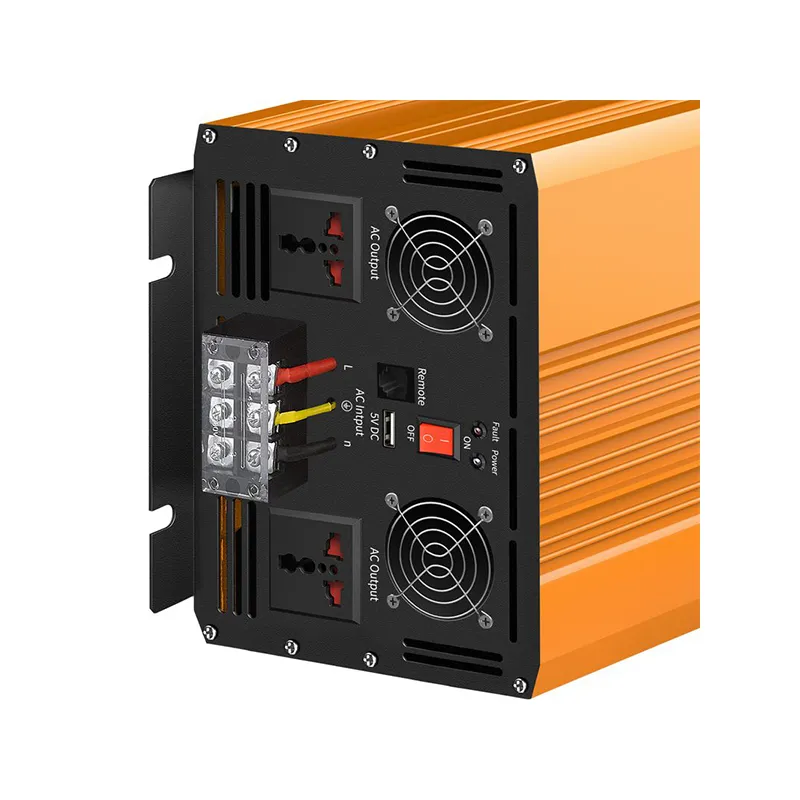Understanding the Functionality of Solar Inverters and Their Role in Renewable Energy
Understanding the Working Principle of Solar Inverters
Solar inverters are essential components of any solar energy system, converting the energy harvested from sunlight into a usable form for residential and commercial applications. Understanding how solar inverters work is crucial for anyone considering solar energy as a viable option for electricity generation. In this article, we will explore the working principle of solar inverters, the different types available, and their roles in a solar power system.
What is a Solar Inverter?
At its core, a solar inverter is an electronic device that transforms direct current (DC) electricity, which is produced by solar panels, into alternating current (AC) electricity. Most household appliances and electrical grids operate on AC power, making the inverter's role vital for the effective utilization of solar energy.
The Working Principle
1. Conversion of DC to AC The primary function of a solar inverter is to convert the DC electricity generated by solar panels into AC electricity. Solar panels produce DC electricity when sunlight hits the photovoltaic cells, causing electrons to move and thus generating electricity. The inverter uses various electronic components to convert this DC into AC.
2. Inversion Process The inversion process typically involves a series of transistors and diodes. Initially, the incoming DC voltage is processed through a series of switches (known as transistors) which rapidly turn on and off. This creates a square wave AC signal. This square wave is then filtered using an additional circuit designed to smooth the waveform, resulting in a clean and usable sine wave AC output.
3. Grid Connection In grid-tied systems, the inverter also synchronizes the phase and frequency of the generated AC power with that of the electrical grid. This synchronization ensures that electricity can flow into the grid seamlessly, allowing homeowners to offset their electricity usage and even sell excess power back to the utility company.
4. Maximum Power Point Tracking (MPPT) A significant feature of solar inverters is their ability to implement Maximum Power Point Tracking (MPPT). This technology optimizes the electrical output from solar panels by adjusting the electrical operating point of the module. MPPT ensures that the inverter extracts the maximum possible power from the solar array under varying sunlight conditions, maximizing overall system efficiency.
solar inverter working principle

5. Monitoring and Safety Modern inverters are equipped with monitoring capabilities that allow users to track their solar energy production in real time. They also include safety features such as automatic shutdown mechanisms in the event of a fault or connectivity issues to the grid, ensuring the system operates safely and reliably.
Types of Solar Inverters
There are several types of solar inverters, each suitable for different applications and system designs
- String Inverters These are the most common type, connecting multiple solar panels in a series. They are cost-effective and straightforward but can be less efficient if panels are shaded or have different orientations.
- Microinverters These small inverters are attached to each solar panel, allowing for optimized performance on a panel-by-panel basis. They are ideal for roofs with varying angles and shading issues.
- Power Optimizers These devices work in conjunction with string inverters. They are installed on each solar panel to maximize energy output while still using a central inverter for DC to AC conversion.
- Hybrid Inverters These can manage energy from both solar panels and energy storage systems, allowing for off-grid capabilities or energy backup during outages.
Conclusion
Solar inverters play a crucial role in harnessing solar energy efficiently and effectively. By converting DC electricity into AC, maximizing power output, and ensuring safety and reliability, they enable the practical use of solar power in our daily lives. As technology advances, solar inverters continue to evolve, making solar energy an increasingly viable option for sustainable energy consumption. Whether you are a homeowner, business owner, or simply an energy enthusiast, understanding the working principle of solar inverters is essential for embracing the future of renewable energy.
-
String Solar Inverter: The High-Efficiency Solution for Smart Solar EnergyNewsJul.14,2025
-
Revolutionizing Rooftop Energy with the Power of the Micro Solar InverterNewsJul.14,2025
-
Power Independence with Smart Off Grid Solar Inverter SolutionsNewsJul.14,2025
-
On Grid Solar Inverter: Powering the Future with Smart Grid IntegrationNewsJul.14,2025
-
Monocrystalline Solar Panels: High-Efficiency Power for the Future of Clean EnergyNewsJul.14,2025
-
Bifacial Solar Panel: A Smarter Investment for Next-Generation Energy SystemsNewsJul.14,2025







